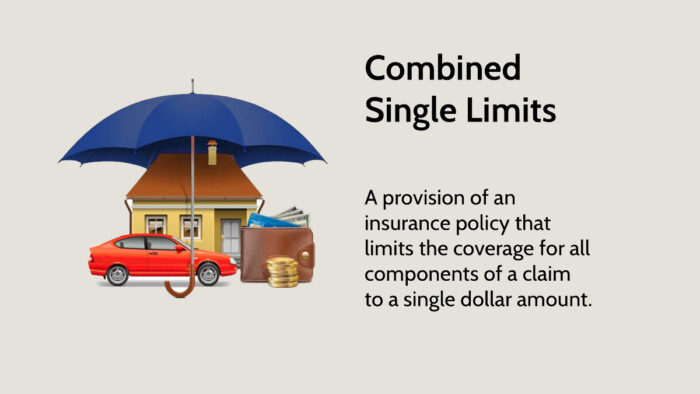Combined single limit is an insurance policy that combines property damage and bodily injury coverage. It refers to the provision of a policy that limits the coverage components of a claim (bodily injury per accident, bodily injury per person, and property damage) to one dollar amount.

In other words, a combined single limit liability policy has a maximum dollar amount that protects any combination of property damage or injuries in an accident. Also, it can be used to cover bodily injury claims for multiple people in an accident.
How Do Combined Single Limits Work?
Also referred to as single limit policies, you can find them in your auto insurance. Just like I have mentioned above, it is a maximum amount that is paid for claims that covers every aspect of property damage and bodily injury. The limits will cover all the individuals involved in the claim or accident, apart from the insured. The maximum amount of coverage will be split between the injured.
For instance, the policy might state that the insurance provider will pay up to a certain amount for a single claim. This limit applies whether the claim is for one individual’s injuries, more than one person’s injuries, or a mix of injuries and property damage.
Keep in mind that the total payout won’t exceed the specified amount, no matter what the claim involves. Combined single limit policies are very important because they let insurance providers allocate the maximum coverage amount wherever it’s needed.
Combine Single Limit vs. Split Limit
Just so you know, Split limit is the opposite of combined single limit. It states a different maximum amount that the carrier will give out for each component of the claim. Split limit coverage breaks the claim payout into 3 coverage areas: bodily injury per person, bodily injury per accident, and property damage.
For instance, a policy with a combined single limit may pay out a maximum of about $300,000 per accident. However, a policy with a split limit may give out $100,000 to each individual in an accident for bodily injury.
With a maximum amount of about $300,000 per accident or incident. If a person asks for $250,000 in damages for the injuries you caused, the combined limit policy will pay the whole amount. But the maximum under the split limit will be $100,000. The only way that split limit will pay $300,000 is if three different individuals each request $100,000 in claims.
Just so you know, combined single limit policies usually have higher premiums because they offer more coverage. A good way to get more coverage than a split limit policy is by purchasing a personal liability umbrella policy. This policy provides extra coverage beyond what your standard auto and homeowner’s insurance offer.
No matter what type of limits your insurance policy has, an umbrella policy can make sure that you’re fully protected in case of a costly accident. For instance, if your policy covers up to $300,000 but you’re sued for about $1 million, your umbrella policy will help cover the additional amount you need.
Combine Single Limits Advantages and Disadvantages
Advantages
Combined Single limit policies have a series of advantages. They can remove the need for extra coverage because the single amount for accident claims allows an insurer to divide it as needed. Also, policyholders with significant properties can rest assured that the financial help they need will be provided through a single limit policy. And the reason is that there are no limits on what can be paid per claim component.
For instance, if you cause an accident that results in a large amount of property damage but very little bodily injury, the bulk coverage can focus on the property damage claim.
Disadvantages
One huge drawback is that premiums are more expensive than those of the split limit policy due to its flexible coverage. Another drawback is that the claim resolution process can take a long time. And the reason is that there is a single amount that payouts are drawn from. Insurers will need all parties to submit their claims before settling one.
Is Combined Single Limit Policy Better?
This depends. The process of applying a single coverage amount as easily as it is needed is a big flex. Coverage in spilt limit policy is set per damage and bodily injury categories. However, a combined single limit policy is more expensive compared to a single limit policy. So, you will need to decide if its benefits are worth the cost.



